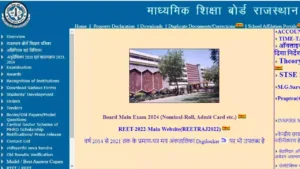In today’s digital landscape, seamless and secure online payment systems are no longer an option, but a necessity. Businesses of all sizes must prioritize safeguarding customer data and financial transactions to earn trust and foster loyalty. This guide empowers you to navigate the intricacies of establishing a secure online payment system, providing essential guidance, best practices, and expert insights.
1. Understanding the Landscape: Key Components and Security Considerations
Crafting a secure online payment system requires familiarity with its core components:
- Payment Gateway: Acts as a bridge between your website and the payment processor, securely transmitting transaction data. Choose a reputable gateway certified by the Payment Card Industry Data Security Standard (PCI DSS).
- Payment Processor: Manages authorization, verification, and settlement of payments between your business and financial institutions. Ensure your processor is PCI DSS compliant and offers robust fraud prevention measures.
- Merchant Account: Facilitates direct acceptance of payments by your business. Partner with a reliable merchant bank or processor that aligns with your industry and transaction volume.
Security Essentials:
- PCI DSS Compliance: Adherence to this industry standard is non-negotiable. Familiarize yourself with the compliance requirements and seek guidance from experts if needed.
- Data Encryption: Securely transmit and store sensitive customer data using robust encryption protocols like TLS (Transport Layer Security).
- Fraud Prevention: Implement advanced fraud detection and prevention tools to mitigate unauthorized transactions and chargebacks.
- Regular Security Audits: Conduct regular penetration testing and vulnerability assessments to identify and address potential security weaknesses.
2. Choosing the Right Solution: Tailoring to Your Needs and Budget
Selecting the appropriate online payment system requires careful consideration of several factors:
- Business Size and Operations: Consider your transaction volume, industry, and target audience. Larger businesses may require more sophisticated solutions, while smaller entities might opt for streamlined options.
- Payment Methods: Determine which payment options (credit cards, debit cards, digital wallets, etc.) you need to offer to cater to your customers’ preferences.
- Cost and Pricing Structure: Compare pricing models (transaction fees, monthly charges, etc.) and choose a solution that aligns with your budget and projected transaction volume.
- Integrations and Features: Ensure the system integrates seamlessly with your existing website, shopping cart, or other software. Assess additional features offered, such as recurring billing, invoicing, or reporting.
3. Optimizing Customer Experience: online payment system
A user-friendly checkout process is crucial for smooth transactions and customer satisfaction:
- Clear and Simple Interface: Design a straightforward checkout process with intuitive navigation and minimal steps.
- Mobile-Friendliness: Ensure your system functions flawlessly on all devices, especially mobile, where a significant portion of online transactions occur.
- Transparent Security Measures: Communicate how you safeguard customer data and emphasize trusted security certifications to build confidence.
- Multiple Payment Options: Offer a variety of popular payment methods to cater to diverse customer preferences.
4. Beyond Implementation: online payment system
Securing your online payment system is an ongoing endeavor:
- Software Updates: Regularly update your payment gateway, processor, and any other software components to address security vulnerabilities.
- Employee Training: Educate your staff on security best practices to handle customer data responsibly and prevent internal breaches.
- Monitoring and Reporting: Monitor transaction activity and review reports for suspicious patterns to identify and address potential fraud promptly.
- Stay Informed: Keep abreast of evolving security threats and industry regulations to adapt your system and procedures accordingly.
By following these guidelines and seeking expert advice where needed, you can establish a secure online payment system that fosters trust, facilitates seamless transactions, and protects your business and customers from financial harm. Remember, security is an ongoing journey, not a one-time destination. Continuous vigilance and adaptation are key to safeguarding your online payments and sustaining your business success.














